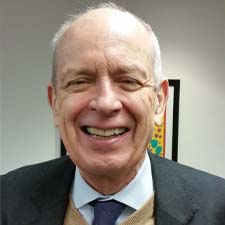In the 1995 book, “Law Firm and the Public Good,” edited by Robert A. Katzmann, the late judge wrote that:
The lawyer’s function is grounded in . . . morality, the idea that special obligations attach to certain roles – in this case, to render justice. . . . The state grants an effective monopoly, in exchange for lawyers, as officers of the court, discharging their duty to further equality before the law. . . .
I have not experienced the “obligation” that the judge described as a “duty.” Rather, often, when I talk to young people thinking of attending law school or who are already there, I say: There are so many great things that I have had the opportunity to do as a volunteer lawyer. (This is in addition to professional opportunities.)
For example, when I was a first year associate at White & Case in 1964, three civil rights workers had been murdered in Mississippi, and I wanted to do something. I asked the head of the firm, Orison Marden, if I could volunteer to do civil rights work on my vacation. Marden knew only that I was an associate of the firm, and he counseled me against so volunteering. By 1966, I had accompanied him to court during the trial of the Texas Gulf Sulphur case. (The White & Case client was Texas Gulf Sulphur). I also worked to investigate and do trial preparation in the case.
After the trial, Marden invited me to lunch with him at the Downtown Association. There, he offered me the opportunity to go to Mississippi as a civil rights lawyer for a month at firm expense. Of course, I said, “Yes.” There were colleagues who advised me against doing it because I would “hurt my career.” However, my career was not damaged nor impeded; for example, I tried my first case in Mississippi, and I gained other experience by handling tough situations.
I also met people. For instance, when I returned, Marden sent me to report to Whitney North Seymour, who was one of New York’s prominent lawyers at the time. While in Mississippi, I worked with the legendary civil rights lawyer Marian Wright. I had never even seen a Black or a woman lawyer before and Marian’s crisp, orderly, take charge performance in court and in strategizing were impressive. I also worked with Hosea Williams who had walked across the Selma bridge with John Lewis. Hosea told me that, “Bull Connor is the hero of the civil rights movement,” since he epitomized the brutal treatment of Black residents in the South as depicted on television, leading Congress to pass civil rights legislation.
Other meaningful volunteer experiences include: (a) participating (with Judge Sidney Stein and former Judge Barbara Jones and others) in a human rights mission to Northern Ireland; (b) being a legal observer of legal proceeding at Guantanamo Bay; and (c) being a lawyer for immigrants at the U.S. detention center in Dilley, Texas. At Guantanamo, I met a U.S. Army Major who was a defense counsel; he explained that “Gitmo” was like an army base on which he had served in the desert in Iraq surrounded by a large group of local residents tending to the base’s needs – with a larger encampment circling the support encampment to provide for its needs. In other words, Gitmo was a sizeable, thriving city supporting a tiny number of defendants and a small contingent of trial-related personnel with two movie theatres, department stores, etc. One sailor working as a machine gunner on a destroyer told us that they protected Gitmo on “24/7” basis. A Washington Post reporter present caustically remarked that this “was necessary to prevent Al-Qaeda from attacking.” These kind of experiences were eye-opening, and, as a lawyer, I had license to be there once I volunteered.
As a young volunteer lawyer, I also had opportunity to witness experienced lawyers making a difference, e.g., Ed Costikyan, as chair of the Association of the Bar of the City of New York Judiciary Committee worked with Mayor Koch to improve the quality and diversity of appointed judgeships. I noted how Conrad Harper, as president of the City Bar, dramatically changed its character, by requiring all committee heads including me to report to him once a year as to the number of women, minorities and lawyers under three years of admission who were members of our respective committees. I had become a member of the City Bar upon recommendation of senior partners of two different law firms. The City Bar, at that time, was more like a prestigious private club. Conrad Harper single handedly changed all that.
Orison Marden, as a young man, organized other young associates at large law firms to support Legal Aid. By the time I met him, he was president-elect of the American Bar Association. Mary Beth Hogan, who has recently stepped down after 11 years of co-chairing the Litigation Department of Debevoise, volunteered to work on the issue of homelessness during her first year as an associate. By now, she has given decades of leadership to combating homelessness as president and a member of the board of Nazareth Housing Inc.
Thus, most often an early public service commitment will help and not hurt a young person’s career. However, a young lawyer, perhaps, should seek counsel before becoming involved in a controversial issue. A consultation with a senior lawyer who is involved in public service may be advisable. Lawyers such as Mary Beth Hogan and Orison Marden are examples of great mentors. In a recent talk to prominent lawyers and judges, Justice Sonia Sotomayor chose not to discuss problems of the Court – but rather to proclaim the importance of young lawyers engaging in public service.

